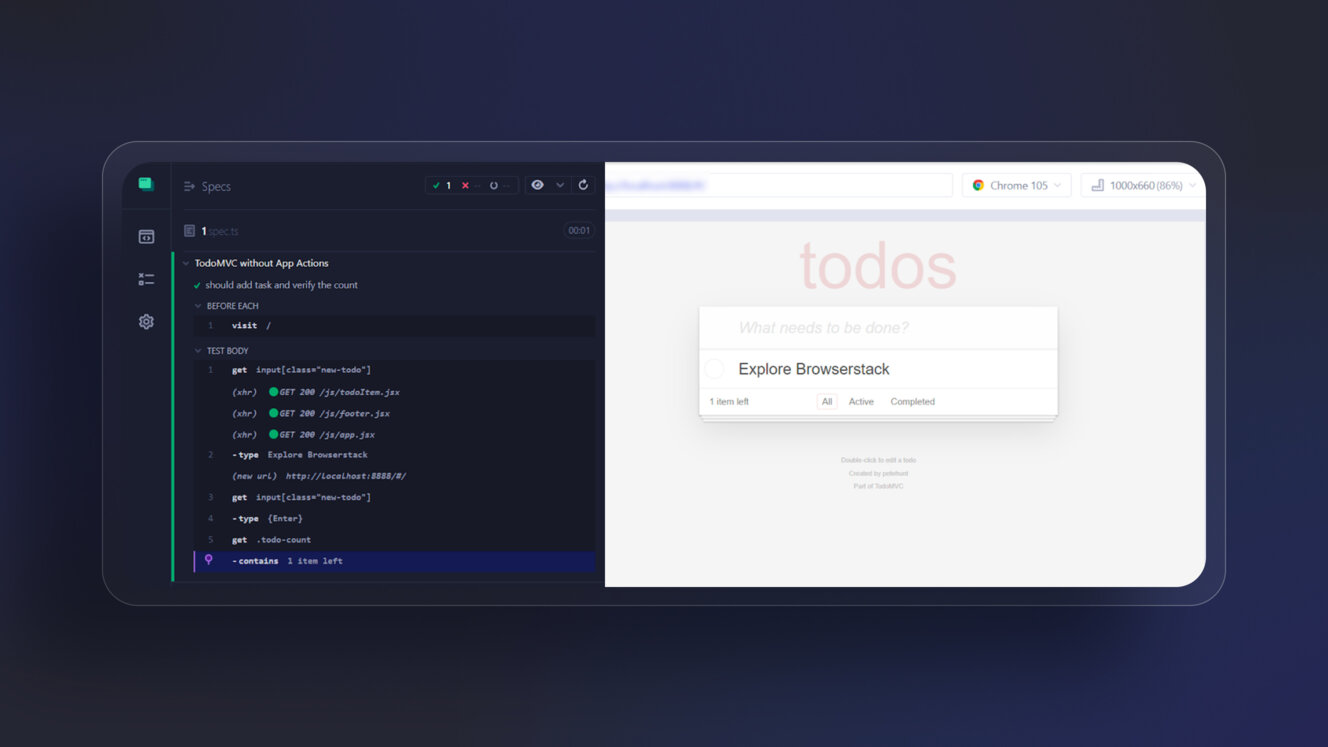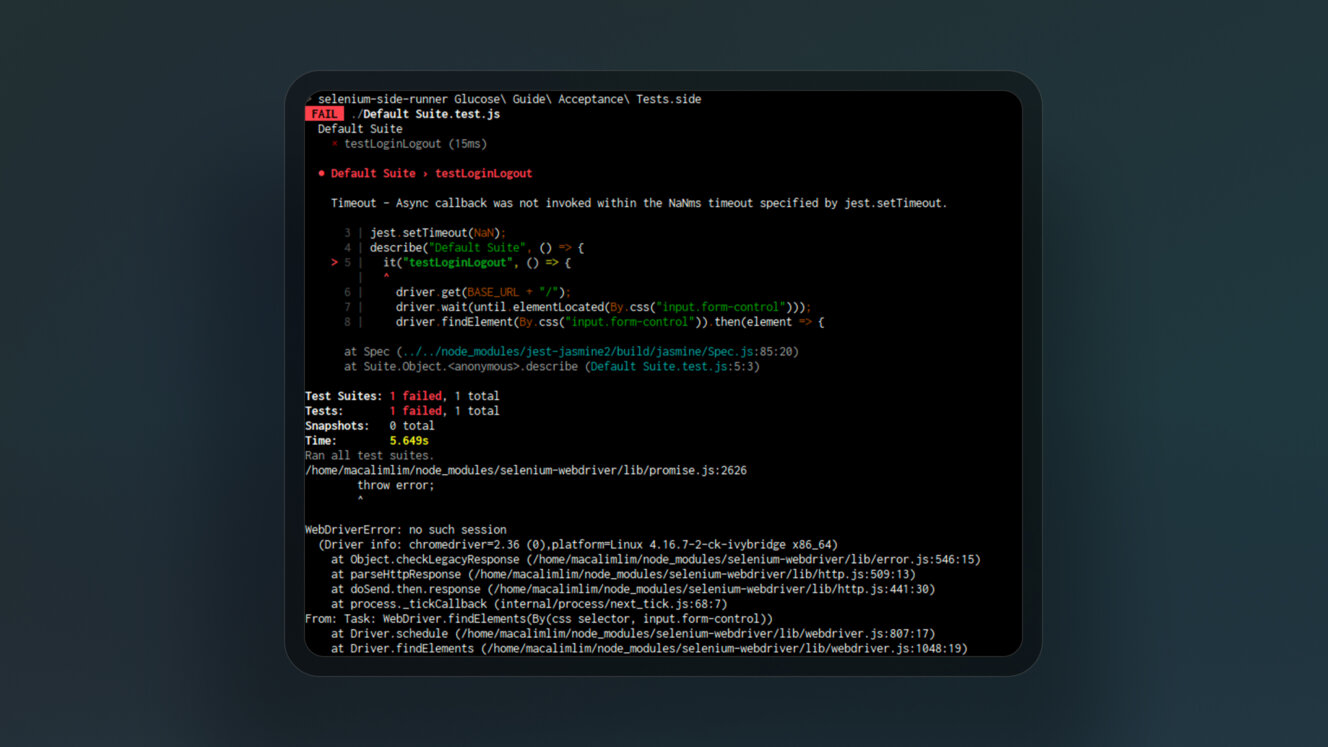
Emil Tomczuk
-
Feb 23, 2024
-
7 min read
The primary goals of testing during software development
One take on testing is simple: it's key to making good software. That's how you can develop top-notch apps and websites that people like using. Not only does testing find problems and stamp them out, but it also makes the software more dependable, high-performing, and enjoyable to use.
- Quality assurance. By testing the software, you can guarantee it meets all requirements and design criteria. Thorough testing ensures that the software runs properly.
- Bug identification. Testing is also used to detect bugs and defects in the software. By employing efficient testing techniques, potential problems can be easily identified and resolved, which results in a smoother software operation.
- Accessibility assurance. Testing ensures that software is accessible and usable for its intended users. This way, it can become more user-friendly and accessible, enhancing the overall usability.
- User experience enhancement. Proper testing is key to creating an efficient and user-friendly application. Neglecting this crucial step can result in user frustration, as undetected flaws may occur recurrently.
- Efficiency and effectiveness. Testing plays a crucial role in determining the effectiveness and efficiency of any software. Not only does it enhance the overall performance, but it also guarantees that it meets the required benchmarks and runs seamlessly.
Automated testing vs manual testing: which is better?
Automated testing and manual testing are two distinct approaches in the software testing landscape. Each has its merits and limitations, and the choice between them depends on various factors.
The advantages of automated testing
- No need for a human to repeat tests over and over. Automated tests work great if you need to perform more or less the same testing tasks or if you need to recheck elements that shouldn't alter even when code changes.
- Time saving. With automation, there is no need to keep repeating test processes manually. It frees up resources for more unique, one-off tasks.
- Adjustability and replicateability. Automated tests can be customised for a range of related scenarios. It makes distributing tests to different parts of the software or a website easier.
- Strength in consistency. Automated methods provide consistent results, routinely helping in spotlighting and troubleshooting bugs that the human eye would usually miss.
The advantages of manual testing
- Flexibility. Considered one of the most vital benefits of manual testing, flexibility allows manual testers to find surprising bugs intuitively, which can be tougher or even impossible with automated testing.
- User experience assessment. Tests performed by actual people can spot many subtle issues, from accessibility to usability and inconsistencies in the layout.
- Complexity. Manual testing always excels in complex scenarios where automation is harder or even impossible to deploy.
- Cost-effectiveness in early development stages. In the early days of every project, when the development starts (and tests follow), manual methods are the most cost-effective and thus valid approach since they don’t ask for heavy spending on automation systems.
The best software testing methods for specific scenarios
Combining manual testing with automation is key to getting the best outcome with minimal effort. By doing this, you can leverage the advantages of both methods, saving money and guaranteeing the highest possible software quality. That being said, there are some specific scenarios to which one method is more suited.
Which tests are better performed automatically?
- Regression tests. A prime application of automated tests. Regression tests determine if new bugs have arisen in the old modules or whole systems after the code changes. They're quite repetitive, and hence, automation can help save loads of time.
- Performance tests. Another type of testing that is often seen automated. Here, a testing tool simulates a large number of users trying to push an app or website to its limit. Performance tests allow for spotlighting where the system might stumble when servers get a heavy load.
- User interface tests. The process otherwise known as UI testing. These types of tests focus on the graphical side of the application or the website. Running UI tests is most effective right before the software is released to the public to provide a smooth, bug-free experience for the end user.
Which tests should be conducted manually?
- Exploratory tests. The type of tests conducted without a pre-set strategy. They’re great for finding surprising bugs. But, this approach needs more dedication and time than automated testing.
- Usability (UX) tests. These tests focus on how a user feels using an interface. A manual test is needed to know a user's reaction while using an application. However, the test outcome relies solely on the specific tester's viewpoint.
- Acceptance tests. These tests make sure the program does what the customer or business team wants. Doing these tests manually makes it easier to see if the final product matches the project’s requirements and compatibility with the intended design. It’s worth noting that acceptance tests can be labour-intensive as they require a thorough checking of every component.
Overview of test automation tools
Choosing the proper automated testing tool is crucial. In this paragraph, we'll delve into three of our top picks: Cypress, Selenium, and PyTest. Each has distinct strengths, benefits, and drawbacks and they all can serve various test needs. Let's dig in and find the best fit for your needs.
Cypress
Cypress is a tool for automating tests. It's usually used for user interface checks, allowing integration tests to be automated. Plus, Cypress can combine both testing methods by allowing the creation of test data through API and confirming if the correct information is displayed on the GUI.
Moreover, Cypress shines with clear guides and a thriving expanding community, making this tool increasingly popular.

Selenium
Selenium helps in automating web tests. It works with many programming languages like Python, Ruby, Java, JavaScript, and C#. It allows for creating tests for specific parts of a website using element’s id property, CSS, XPath, and more. It also enables the creation of tests even without the particular code knowledge, as it can record the test's steps. One of Selenium's biggest advantages is the ability to transfer the test results to an external file, such as CSV, which vastly improves their maintainability.
It's one of the most popular test automation tools on the market, so there's no surprise that the community surrounding Selenium is very large. Moreover, it's highly responsive so that you can easily find answers to any problems on the tool's forum.

PyTest
PyTest is an open-source tool that lets you write and execute various types of tests using Python. It supports unit testing, integration testing, and even end-to-end testing, and it gained the most of its popularity as a tool for testing web services. PyTest's key benefit is its versatility, fitting both basic and more intricate tests. Like other test automation tools described above, PyTest also provides quality documentation and a large pool of additional libraries and is supported by an active, problem-solving community.
Despite those benefits, PyTest also has some minor drawbacks. Needing a Python language interpreter, for instance, is one. It's also not very user-friendly to those who need to yet learn Python and gain all corresponding programming knowledge. PyTest users need to have a good grasp of this language even to begin using this tool. The need for considerable programming skills makes it less reachable.

Manual and automated testing: cost and efficiency comparison
It's clear we now grasp the crucial aspects of both software testing types and when to use each. But, most of the time, cost and efficiency shape one method's preference over another.
Manual testing involves having testers hands-on during the testing phase, which needs adequate training and a sufficient team size. On the other hand, setting up automated test scripts initially takes a lot of effort and time, which increases the starting budget. Yet, automated test methods can save resources later on. It's worth noting, though, that the proper tools and script maintenance investments generates ongoing costs.
As the efficiency goes, manual tests shine when testing a changing environment or as a one-time thing. They are also highly adjustable in the face of evolving conditions and can help to detect subtle bugs more easily. This way, they can spot issues automated tests might miss.
Automated tests are the most efficient when used on fixed elements or larger structures. It's true that they first require more work to make the scripts. However, in the long run, they cut down how long it takes to test a section, element, page, or application without significant staff involvement.
Picking between automated or manual testing hinges on the unique project requirements, budget, and broader aims. A smart strategy is frequently to blend these two methods, playing to their strengths depending on the specific project demands.
Summary
So, how do we make software testing work best? It's all about knowing when to use the hands-on approach of manual testing or the faster, repetitive power of automated testing. The key to making the right choice is knowing both method's strengths and weaknesses.
Manual testing requires human intervention and is very good at catching tricky bugs. This method is very flexible but also less cost- and time-efficient. Designing them mainly involves identifying the areas in which human input is necessary.
Automated tests use scripts and are great for saving time and performing repeatable tasks. Their main advantage is making the routine test more manageable so that the testers can focus on more complex scenarios.
What method is the best? It depends mainly on the needs of a particular project, its budget, and its aim. The best industry practice is to use both testing methods. That way, you get the benefits of each, giving you thorough testing and excellent software results.








